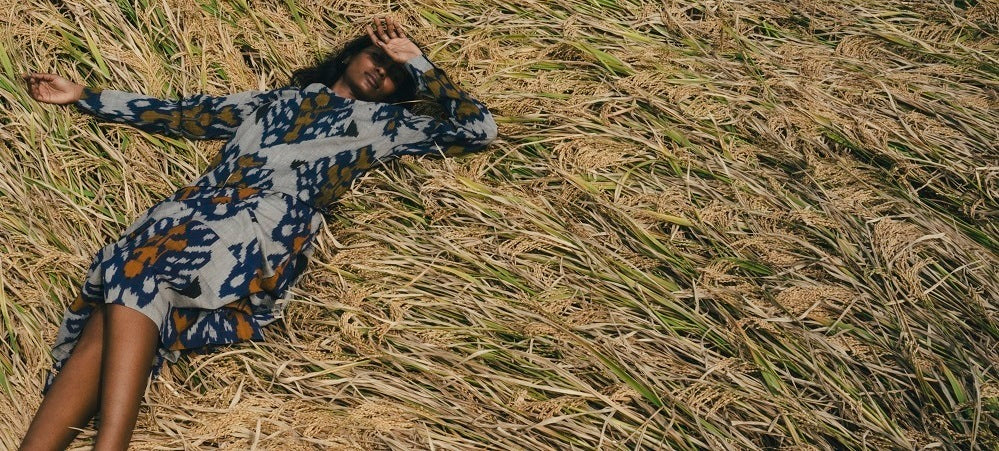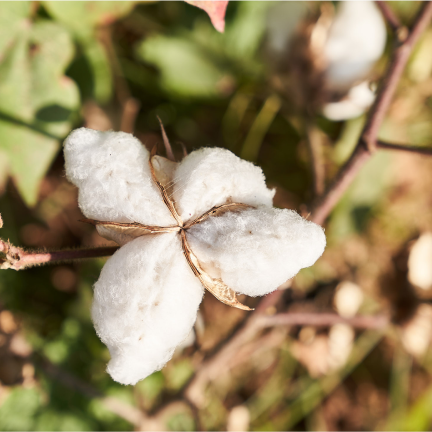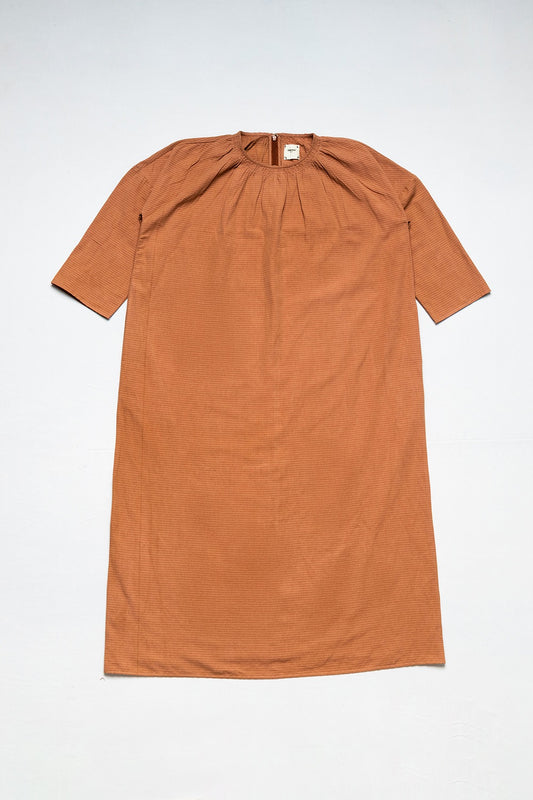At Oshadi, our seed-to-sew system means everything is grown (and sewn) for a reason. Alongside cotton, we grow paddy (rice), sesame for seeds and oil, and legumes like toor dal, black gram and peanuts. This rich biodiversity helps to nurture the soil and sustain our farm. Below are two of our favourite seed-to-table recipes that we hope you might bring to life in your own kitchen – all photographed on our Harissa-Wave block print from this season’s collection.
Peanut Chutney
(Kadalai ‘kuh-duh-lay’ Chutney 'ch-uh-t-nee')
This peanut chutney is spicy, tangy and comforting. Pairs well with dosa and idli.

Ingredients:
| Peanut (Groundnut) oil, or other neutral oil | 1 tbsp |
| Garlic cloves | 10 |
| Dry red chillies | 6 |
| Cumin seeds | 1 tsp |
| Curry leaves | 25g |
| Asafoetida | Pinch |
| Salt | To taste |
| Roasted peanuts | 100g |
| Tamarind paste | 1 tsp |
| Mustard seeds | ½ tsp |
| Urad dhal (black gram) | ½ tsp |
Method
- Place a pan over medium heat and add the 2 tsp oil. Once hot, fry the garlic cloves, chillies and cumin seeds until fragrant.
- Add most of the curry leaves, along with the asafoetida and salt. Remove the pan from the heat and set aside.
- If you’re starting with skin-on peanuts, remove the skins and place into a food processor along with the fried mixture from the pan, 1 tsp tamarind paste and 50ml of water. Pulse to a coarse paste. Taste and adjust seasoning.
- Now make the tempering. In a small pan over medium heat, add the remaining 1 tsp oil. Once hot, add mustard seeds, the remaining curry leaves and urad dhal. Fry for 2 minutes.
- Add the tempering over the peanut chutney, mix and serve.
Vadai
('vah-dah-ee')
Vadai is a popular fried snack in Tamil Nadu. It is crispy and delicious. Vadai is typically served with coconut chutney or tomato chutney. It is sometimes made on auspicious days as an offering for god.

Ingredients:
| Urad dhal (black gram) | 200g |
| Black peppercorns | 1 tbsp |
| Onion, chopped | ½ |
| Green chillies, chopped | 4 |
| Rice | 1 tsp |
| Toor dhal | 1 tsp |
| Salt | To taste |
| Sunflower oil, for frying | 1.5 L |
Method
- Soak the black gram in water for 15 minutes.
- Rinse and discard the soaking water. Add black gram to a food processor with 3 tbsp Water. Grind to a thick batter. The batter should have the consistency of a very thick cake or pancake batter. Add more water to the food processor as needed, 1 tsp at a time, until you reach the desired consistency.
- Grind the peppercorns with a spice grinder, or pestle and mortar, and add to the batter, along with onion, chillies and salt.
- Add sunflower oil to a large, heavy-bottomed pot over medium heat. Preheat the oil to 350°F/175°C.
- To make shape the vadai, place a small amount of oil on your palm to prevent the batter from sticking. Add about 2 tbsp of batter into the palm of your hand and make a hole in the centre with your finger. Then, gently drop into the oil.
- Fry each fritter for about 5 minutes, turning over halfway through, until it turns golden brown. Remove from the oil and drain onto kitchen paper to absorb excess oil. Serve hot.












